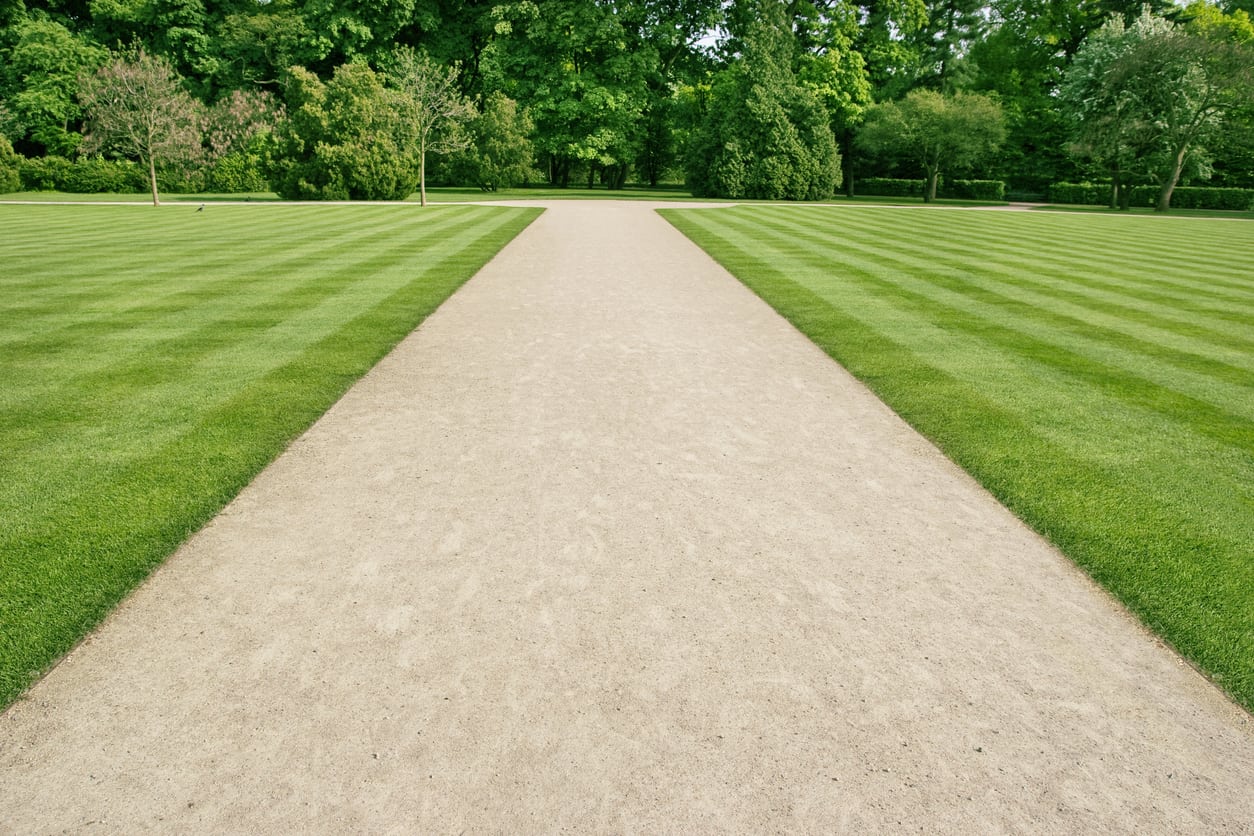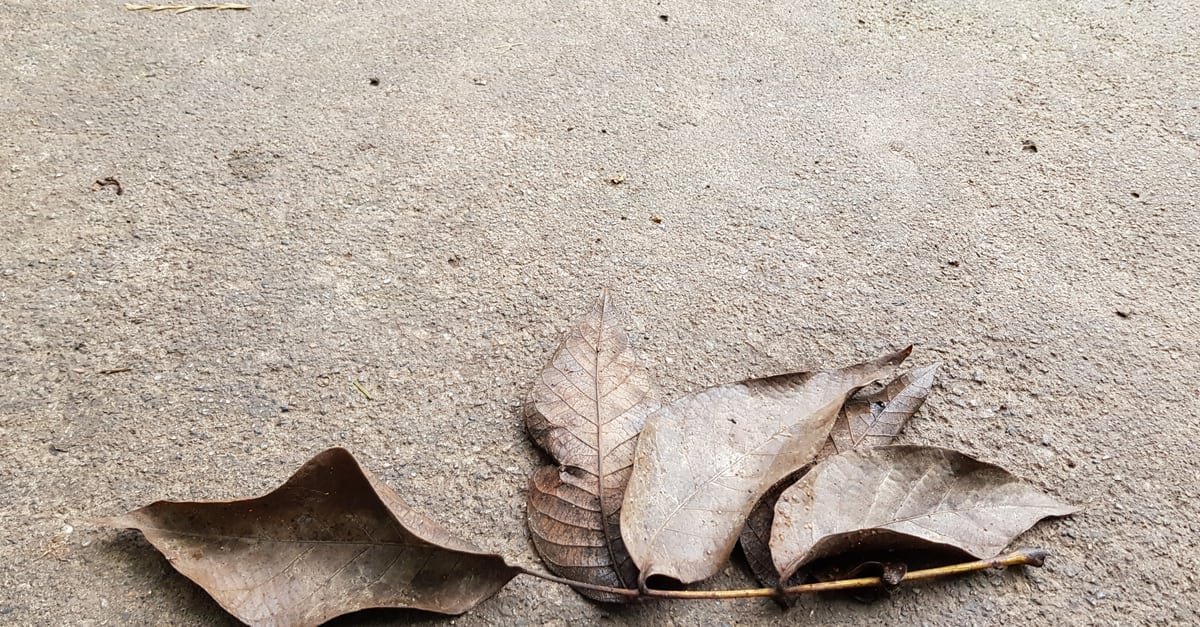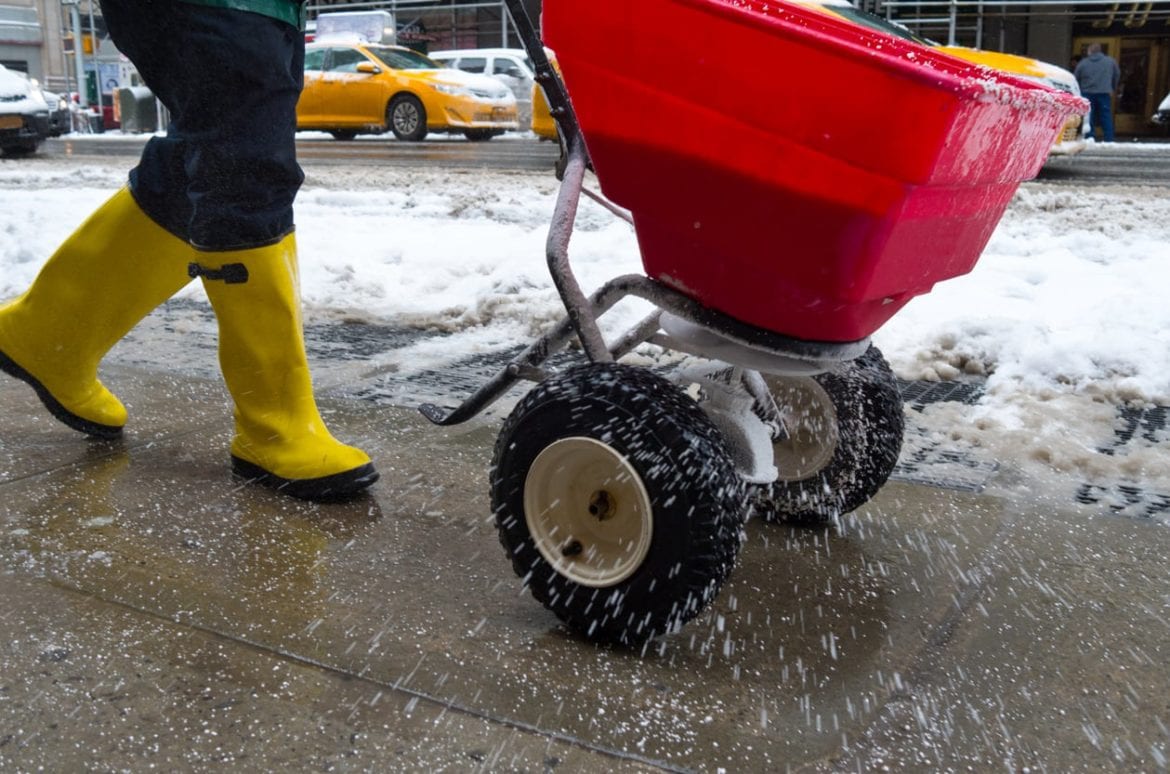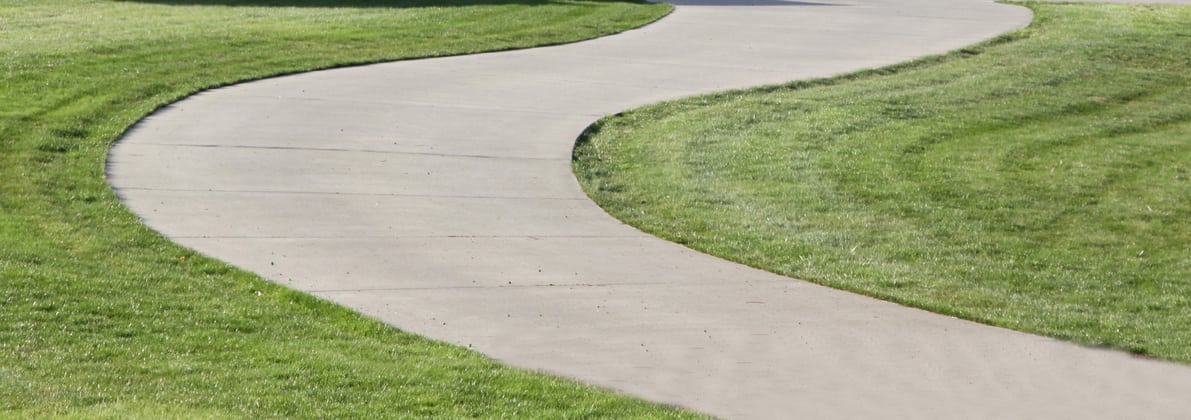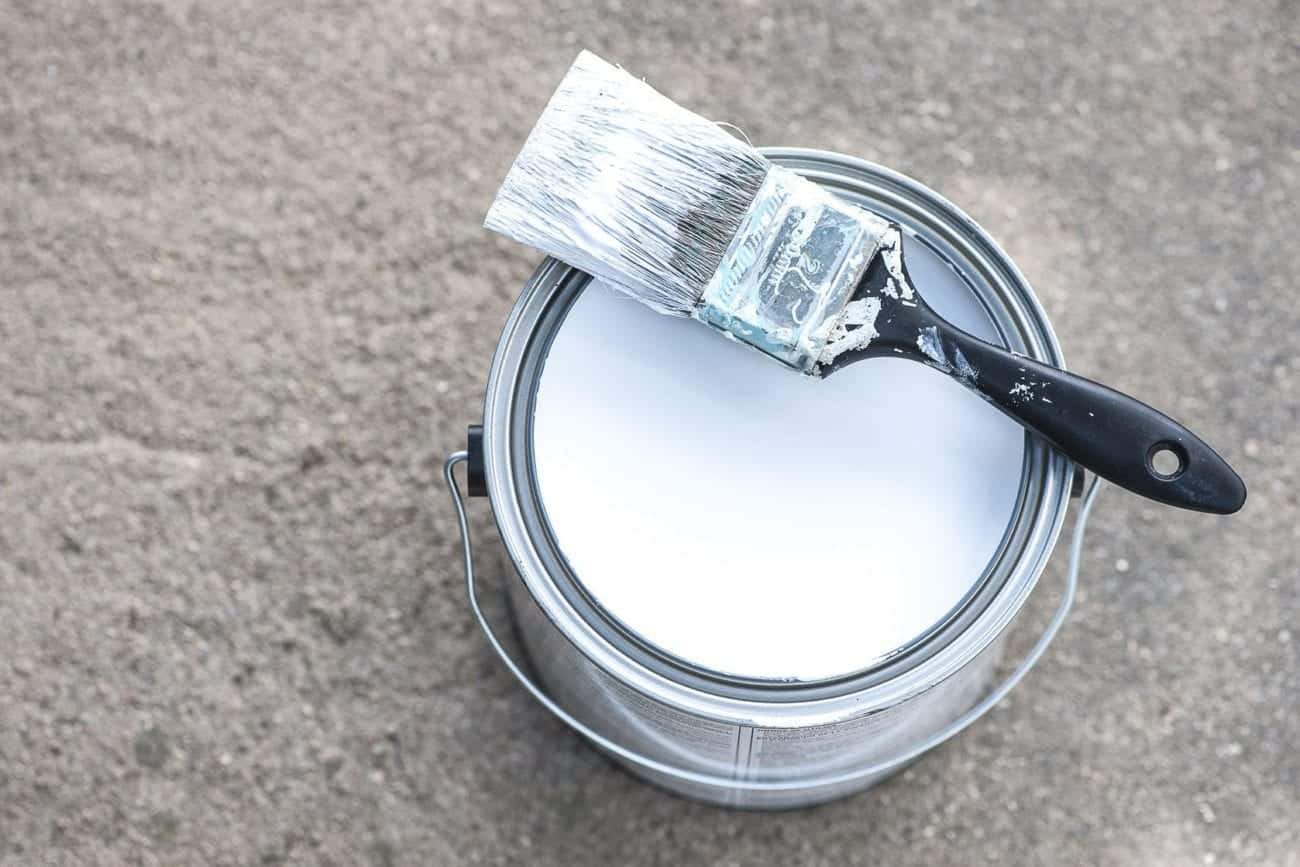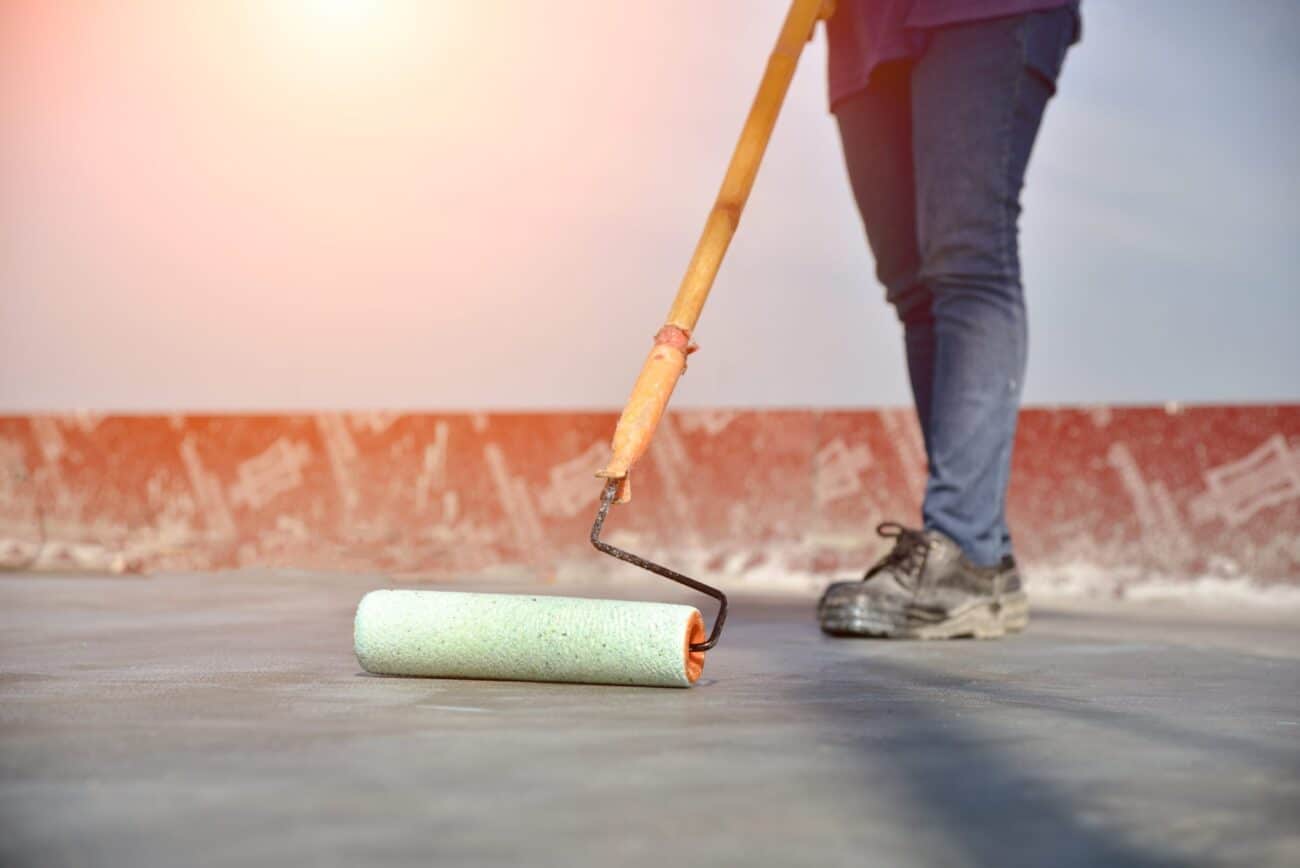What is the best sealer for concrete driveways?
After sealing over 20 driveways with countless concrete sealers we think the Siloxa-Tek line offers the best overall natural finish sealers for concrete. They offer a slip free surface, good stain resistance and excellent salt repellency. There are three products in the Siloxa-Tek line and although they are relatively more expensive than other products on the market, they have a high actives content, long lifespan and are easy to use and apply.
Our Pick: Our favorite product in the Siloxa-Tek line is the Siloxa-Tek 8510. It will resist staining from oils and greases, as well as protect from harmful deicing salts and chlorides while not changing the look or appearance of the concrete itself. In our tests, the high actives content of about 95%, equates to a lifespan of about five years before reapplication is necessary.
Limitations: The stain repellent additive in the Siloxa-Tek 8510 is able to withstand oil and grease staining; however, if left to sit for more than a few hours you will need to use a pressure washer to remove the stain. Pressure washing concrete treated with the Siloxa-Tek 8510 is safe and will not harm the sealer. Since the 8510 is penetrating it is still recommended that spills be cleaned up in a timely manner.
We also like: Like its name suggests, Prosoco Saltguard is a great option for cold weather climates that need protection from deicing salts and chlorides. It is also commonly used in salt air climates and works by reducing chloride penetration. Saltguard also protects against mud splashes and other waterborne contaminants.
Limitations: It is not readily available through big box distribution; however, specialty construction supply houses may sell this product.
What is the best concrete sealer for fall?
Fall is here and it is one of the most popular times to seal concrete. The fall season reminds us that winter is soon approaching and with winter comes deicing salts, chlorides, freeze-thaw cycles and snow. Choosing a concrete sealer that will be able to withstand all these elements is easier than you might think.
If you live in a northern climate and you are looking to seal your concrete from harmful deicers and chlorides that your vehicle tracks into the driveway or garage you are going to want to use a penetrating silane or silane/siloxane sealer. Silanes act like a chloride screen keeping the water and salt out of the concrete while simultaneously protecting against spalling, pitting and cracking. They are clear, leaving natural finishes so it wont be visually apparent that the concrete had been sealed, until it rains or snows and the water beads up keeping the concrete light in color instead of darkening it. Historically silanes have been used on bridge decks and bridge pilings to keep the concrete from erroding and decaying. If you have ever driven under a bridge and have seen the exposed rusting rebar chances are the concrete was never sealed. By using a penetrating silane based sealer concrete remains in tact and protected from the harsh winter season.
Fall is the season that all the summer projects you may have pushed off come to a head. Fall is also a great time to seal concrete because the temperature and humidity levels are more in check with the manufacturers recommended application parameters. When applying a penetrating silane sealer, a backpack sprayer is usually the best application tool. We like this one from Home Depot. It makes the application process go quick and easy leaving your back in tact.
What is the Best Concrete Sealer for Winter?
With fall just around the corner, concrete sealer season is in full swing. Fall is an extremely popular time of year to seal concrete since it is beneficial to protect outdoor applications from road salts and freeze-thaw cycles.
Municipalities and the Department of Transportation use chlorides and deicing salts to melt the snow and ice on the road ways. Vehicles on these roads track this salt onto driveways and into garages and once parked the snow and salts melt off of the vehicle into a puddle on the concrete. If left untreated over time the concrete will start to erode in these spots and cause thousands of dollars worth of damage.
When it comes to choosing the best concrete sealer for winter climates you are going to want to use a penetrating concrete sealer preferably with a silane component. Silanes are excellent salt and chloride repellents that are able to protect concrete from damaging spalls, cracks and unsightly pitting. Penetrating silane sealers are able to penetrate the substrate and create a hydrophobic barrier to keep out water. Water is the major culprit when it comes to concrete damage and it is the carrier of road salts. By keeping the water out of the concrete you will be keeping out the damaging salts and chlorides and prevent any damage.
When looking for a silane concrete sealer look for a high actives formulation. A high actives concentration means you are getting a high amount of active ingredient into the concrete without any filler or byproduct. Silanes are available in actives concentrations as high as 100% and as low as 5%. Silanes are available with water based carriers or solvent based carriers with the solvent based carriers penetrating deeper and performing better over time. Silanes can also be mixed with siloxanes, known as silane/siloxane sealers.
In order to determine the best concrete driveway sealer you need to figure out what your driveway is composed of and what type of protection you are looking for.
Stamped concrete: Stamped concrete is typically used in southern parts of the country to add a decorative look to concrete driveways. Typically an integral color is used to make the concrete look like stone or brick. When it comes to sealing stamped concrete driveways you can use a decorative acrylic sealer that will add a gloss or a satin finish to bring out the colors, textures and patterns. Since acrylic sealers are topical in nature they need to be reapplied every year to every few years especially on driveway applications with vehicular traffic.
Pavers: Pavers are similar to stamped concrete in the way that a lot of time a decorative concrete sealer is used to darken and enhance the colors of the pavers. However, decorative sealers need to be reapplied every few years. If you are looking for a longer lasting option a penetrating concrete sealer can be used. Penetrating concrete sealers do not leave any sheen they leave a natural finish but are able to keep out water and harmful road salts from damaging the pavers.
Broom finished concrete: Broom finished concrete is the typical finish of concrete driveways. Broom finished concrete is usually sealed to keep out road salts, stains, mold and mildew. Penetrating concrete sealers are the best option to seal broom finished concrete as they will not change the look or the appearance but will provide the longest lasting protection. Penetrating sealers typically react chemically or impregnate the concrete to form a hydrophobic surface environment. This is turn keeps out the water which would otherwise normally carry salts and damaging substances which would in turn lead to cracking and spalling. Penetrating concrete sealers can also resist small stains from oils and greases and allow for easier clean up.
Q: What Kind of Paint Do You Use on Concrete?
A: Concrete floors can be painted with a traditional paint; however, paint is at high risk of flaking and peeling when applied to concrete, especially in garages with vehicle traffic or basements with moisture. When it comes to painting the concrete we would recommend using an epoxy floor coating with a urethane top coat. Epoxies are essentially durable paints. They are two component products that have a part A and part B that are then mixed together and applied to concrete.
Epoxy floor coatings are effective on concrete as long as the surface has been properly prepared. Concrete needs to be etched with muriatic acid or grinded with a floor machine grinder. When concrete is poured it is typically troweled smooth. This can be problematic when applying an epoxy floor coating since there is no “bite” in the concrete for the coating to adhere to. By prepping the concrete it is going to end up feeling like sand paper, the perfect profile for installing a durable concrete coating.
Once the concrete has been cleaned if there are any oil stains on the concrete you are going to want to use an oil stop primer. Oil stop primers are applied over oil stains and they allow the new epoxy coating to adhere to the concrete. If an oil stop primer is not used a concrete coating will not bond to the oil stain. If an epoxy floor coating is going to be applied in a basement that has moisture you are going to want to use a moisture barrier coating to stop any moisture and prevent the epoxy from de-laminating.
At this point the concrete is ready to accept an epoxy coating. Epoxies are available in clear or colored versions and decorative additions like paint chips, oxides, quartz and metallics can be used to achieve decorative effects. Epoxies are sold in kits that need to be mixed with a drill attachment or jiffy mixer prior to application. Once part A and part B have been mixed you can then apply the epoxy with an Epoxy Glide roller. About twelve hours later you can go over the epoxy with a urethane top coat for extra abrasion and staining protection.
Even though they are more expensive, epoxy floor coatings are great options for giving concrete the paint look with a longer lifespan of 5 to 10 years when compared to standard paint.
Q: How do you seal concrete?
A: It is beneficial that all concrete be sealed; this includes old concrete, new concrete, stamped concrete, broom finished concrete, driveways, basements, patios and more.
In order to answer the question, “how do you seal concrete,” you first must determine what type of sealer you are going to be using.
Driveway: concrete driveways are typically sealed to either prevent the growth of black mold and mildew, prevent staining from automobile fluids, or prevent deicing salt damage, cracking, pitting and spalling. Generally speaking, the best concrete driveway sealers to use are penetrating waterproofing sealers. In order to seal a concrete driveway you want to make sure that the concrete is clean, free of debris, previous sealers and dry. Once the concrete is clean and dry you are going to want to apply the sealer. Penetrating concrete sealers leave clear, natural finish and are best applied with a pump up sprayer or 3/8″ nap roller.
Garage: concrete garage floors are typically sealed to either prevent staining from automobile fluids, prevent deicing salt damage, cracking, pitting and spalling, or provide a durable chemical, acid and abrasion resistant surface. Generally speaking, the best concrete garages sealers to use are epoxy garage floor coatings. In order to seal a concrete garage you want to make sure that the concrete floor is clean, free of debris, previous sealers and dry. You are also going to want to make sure that the concrete has good surface profile. This can be achieved by either acid etching the concrete or grinding the floor with a floor grinder. The floor needs good surface texture in order for the epoxy floor coating to properly bond with concrete. Once the concrete is clean and dry you are going to want to apply the coating. Garage floor coatings are available clear or colored and can be used with paint chips for a decorative look. They are best applied with a 3/8″ nap roller.
Patio: concrete patios are typically sealed to either prevent the growth of black mold and mildew or to enhance the substrate with a high gloss or satin finish. Generally speaking, the best concrete patio sealers to use are decorative solvent based acrylics. In order to seal a concrete patio you want to make sure that the concrete is clean, free of debris, previous sealers and dry. Once the concrete is clean and dry you are going to want to apply the sealer. Decorative concrete sealers leave clear, high gloss or satin finishes and are best applied with a 3/8″ nap roller.
Basement: concrete basements are typically sealed to either prevent the growth of black mold and mildew or to prevent water and moisture intrusion. Generally speaking, the best concrete basement sealers to use are moisture vapor barrier coatings. In order to seal a concrete basement you want to make sure that the concrete is clean, free of debirs, previous sealers and dry. You also want to make sure that the moisture content of the concrete is within the sealers limitations as set by the manufacturer. This can be determined by performing a calcium chloride test, relative humidity test, or by using a concrete moisture meter. Once the concrete is clean and dry you are going to want to apply the sealer. Concrete basement coatings leave clear, high gloss finishes and are best applied with a 3/8″ nap roller.

